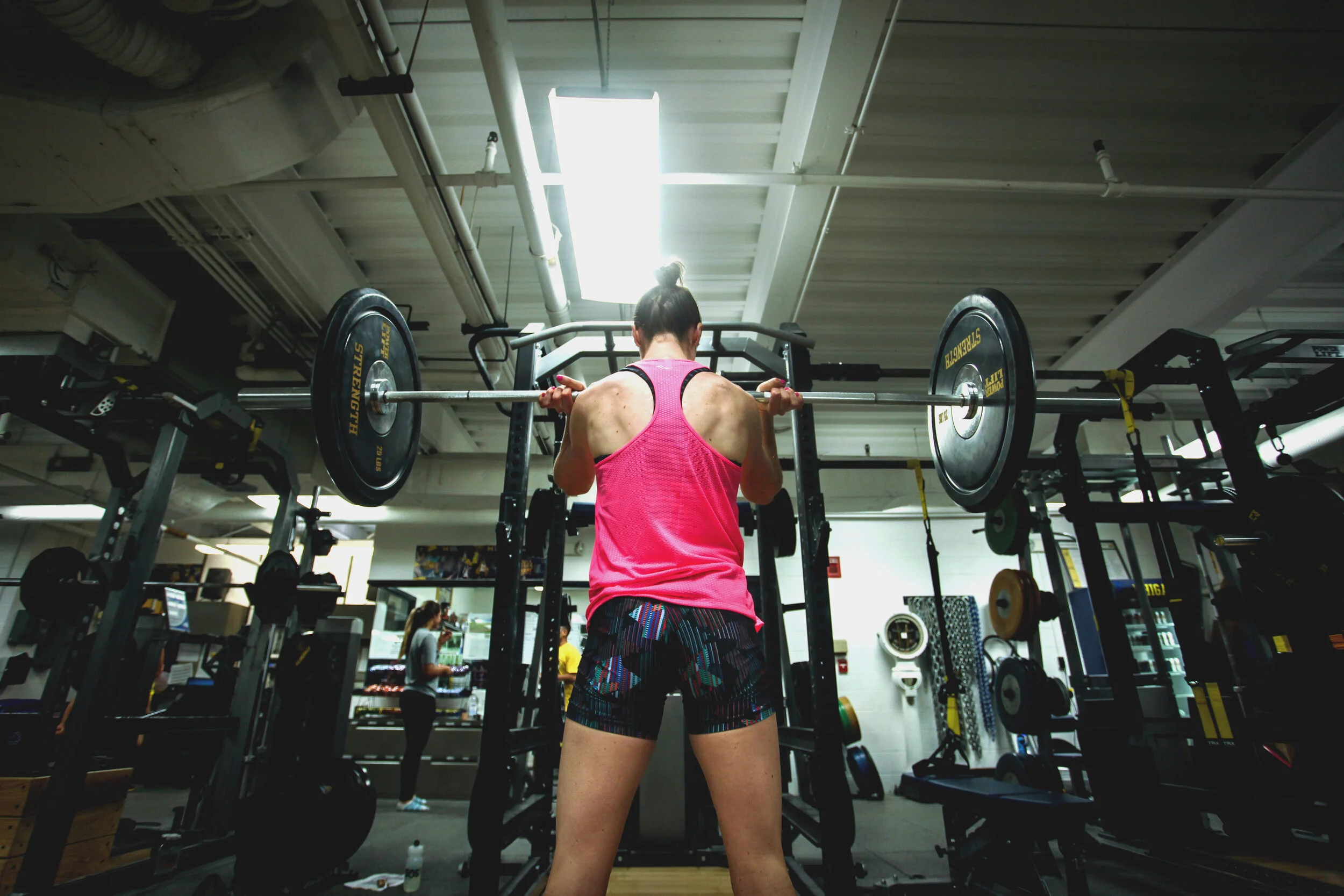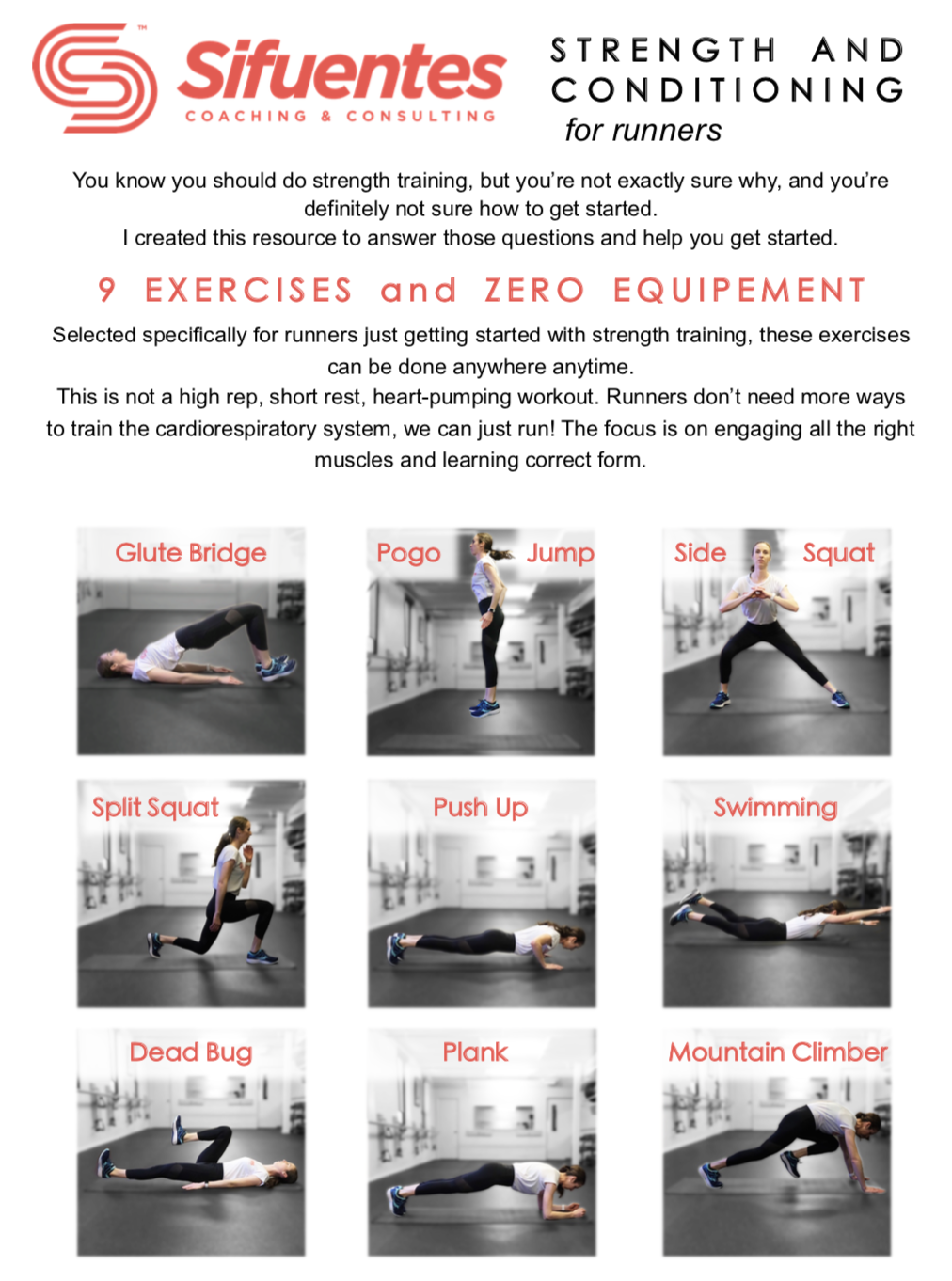Get Faster Without Running More
Are you looking to get faster and stronger? Maybe you’d just like to get through a full year without any injuries.
As an Olympic athlete, strength and conditioning was a key aspect of my training, but what about for recreational runners - do all runners need strength training?
Absolutely! Strength & Conditioning can help all runners get faster, run further, and prevent injury.
When I started Sifuentes Coaching, the first thing I did was become a Certified Strength & Conditioning Specialist because of how effective strength training can be. Here’s why:
SPEED
By developing and increasing the strength in the legs and lower body, runners are able to put more force into the ground with every single step. More force into the ground, runners propel their body forward a little bit further with each step, covering ground more quickly. This is speed!
When lifting heavy, the training effect of a strength session is more similar to fast running or sprinting than it is to distance running. Heavy resistance training engages the fast twitch muscle fibers and helps maintain or increase speed without doing focused speed work while running.
CONTROL
Strength training in the core/torso is so important because as runners, we need a strong core to stabilize our upper body and torso while pumping our arms and legs. Stability means control and less unnecessary motion.
Stability also means we more effectively use the strength in our legs. To illustrate this point, imagine trying to lift a heavy box while standing on both feel firmly planted, vs lifting that same box while standing on a skating rink. It would be a lot harder to use your strength on the icy surface.
Core strength is the key to control and stability! Naturally, the outer core muscles like rectus abdominals (“6-pack”) and obliques get a lot of attention, but these are part of a bigger set of core musculature which provides stability for the entire body. The deeper core muscles, such as the transverse abs (wraps around the spine) the pelvic floor (controls bladder & bowels), QL (lower back) and erector spinae (muscles of spine) are all incredibly important but often overlooked.
ENDURANCE
Have you ever seen that meme “what I think I look like while running VS what I actually look like?” We imagine a beautiful gazelle-like posture and stride but in reality arms are flailing and shoulders are rounded forward.
One of the most telling signs of a weak runner is poor posture. Although runners tend to think mostly about legs (because they demand our attention when sore or tired or injured) running is a full body exercise.
A weak upper body will tire quickly, resulting in a lot of wasted motion, excessive rotation of the trunk and arms moving away from the body while pumping forward and back.
Training the upper body and core will reduce or eliminate this unnecessary movement that wastes energy. Improved efficiency means a runner can go further before fatigue sets in. This is endurance!
INJURY PREVENTION
Running is a high impact sport and the movement pattern is very repetitive in one direction: straight ahead. Overuse injuries associated with the repetitive loading are common, as are injuries to muscles that are weak in movement patterns different than running. For example, running doesn’t condition our muscles for lateral (side-to-side) movement. These imbalances in strength leave us vulnerable to injury, but with specific exercises such the side squat or lunge we can work on improving the balance of strength in different planes of motion.
In addition, most runners have some asymmetry — one side of the body tends to be tighter or experience more pains and niggles than the other. Unilateral (single leg) exercises like the split squat help identify and correct these asymmetries. Improved balance and symmetry help us run smoothly. This is resilience and injury prevention!
FREE RESOURCE
I decided to actually do something to help you: the reader, the runner, get started: I created a FREE Strength & Conditioning program for runners. This is a balanced set of exercises selected specifically for runners and it requires zero equipment.
Pssst. Here’s a sneak peek of the FREE DOWNLOAD


